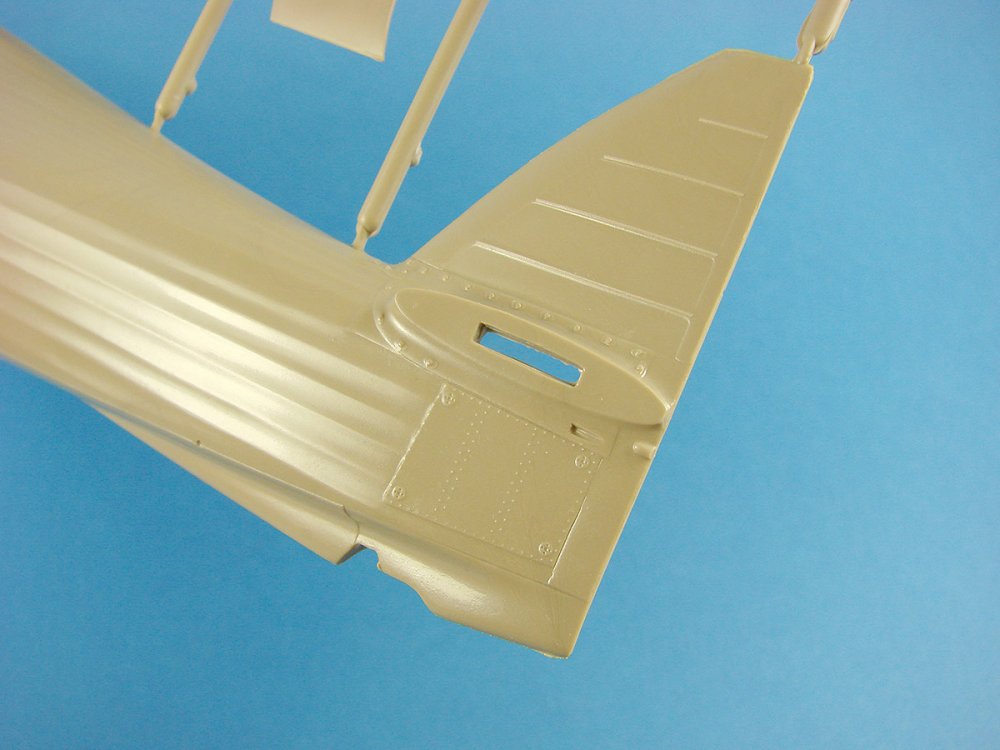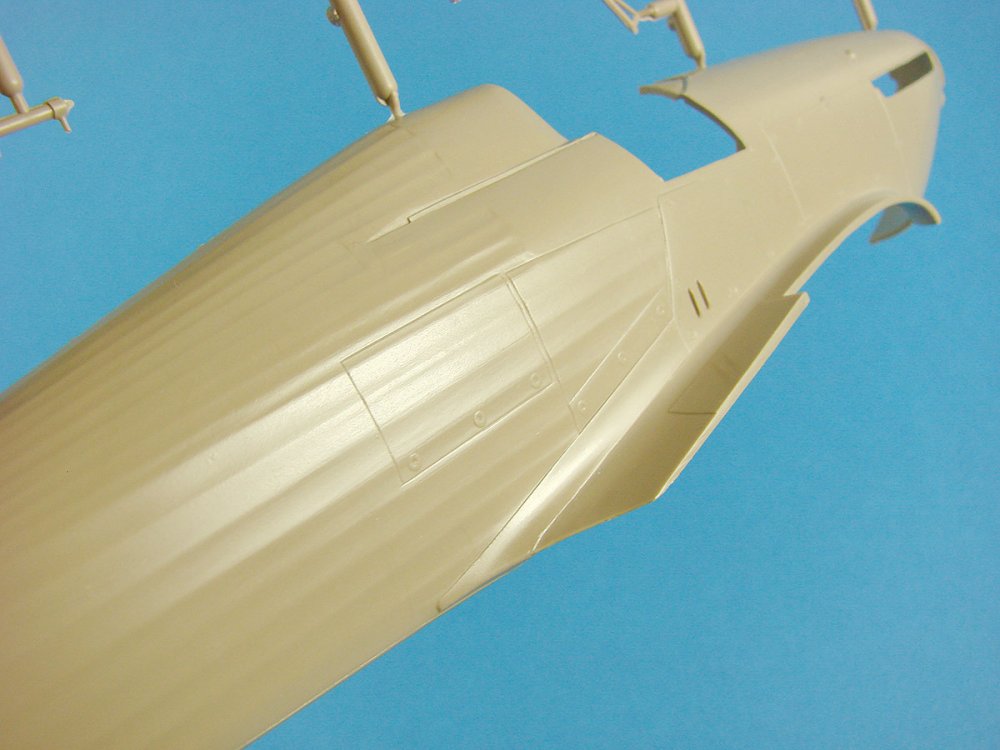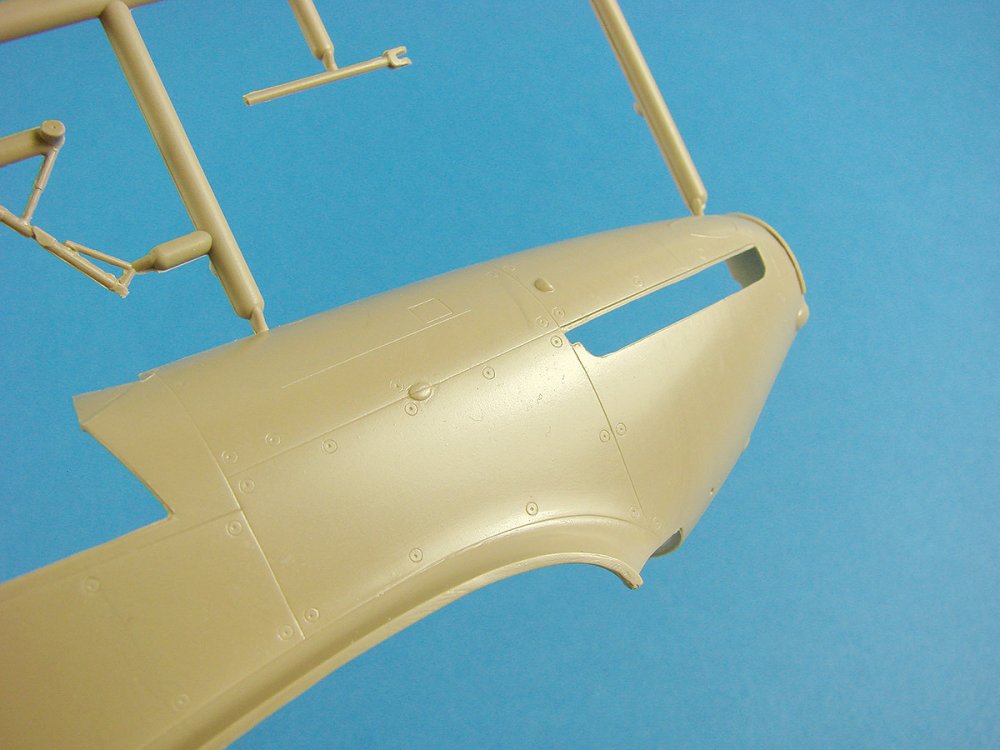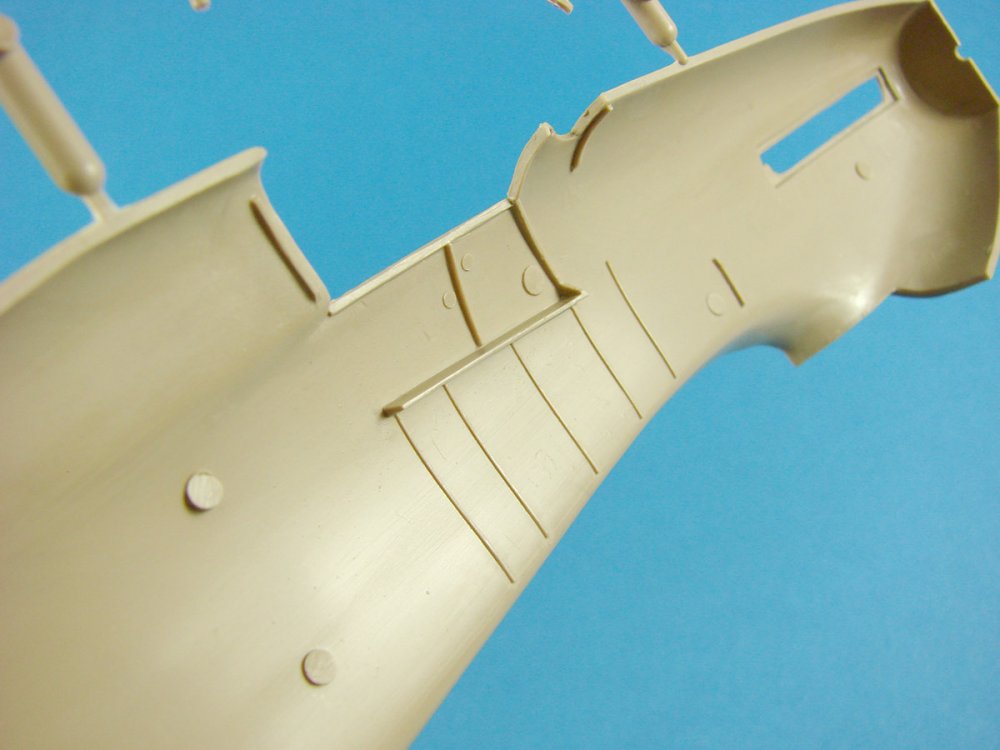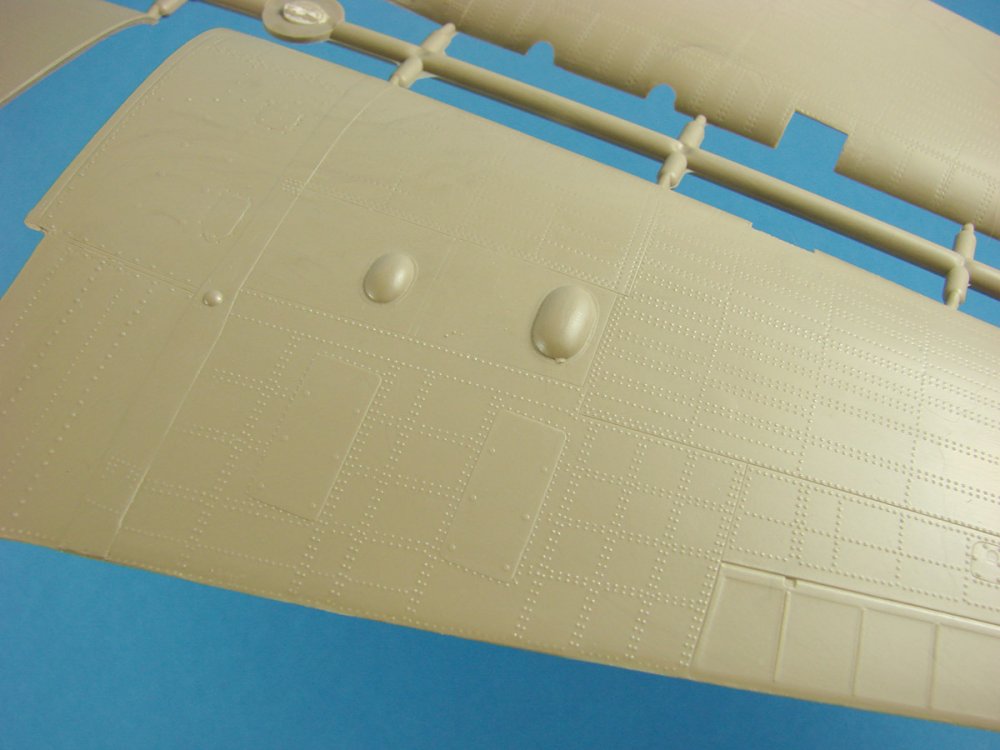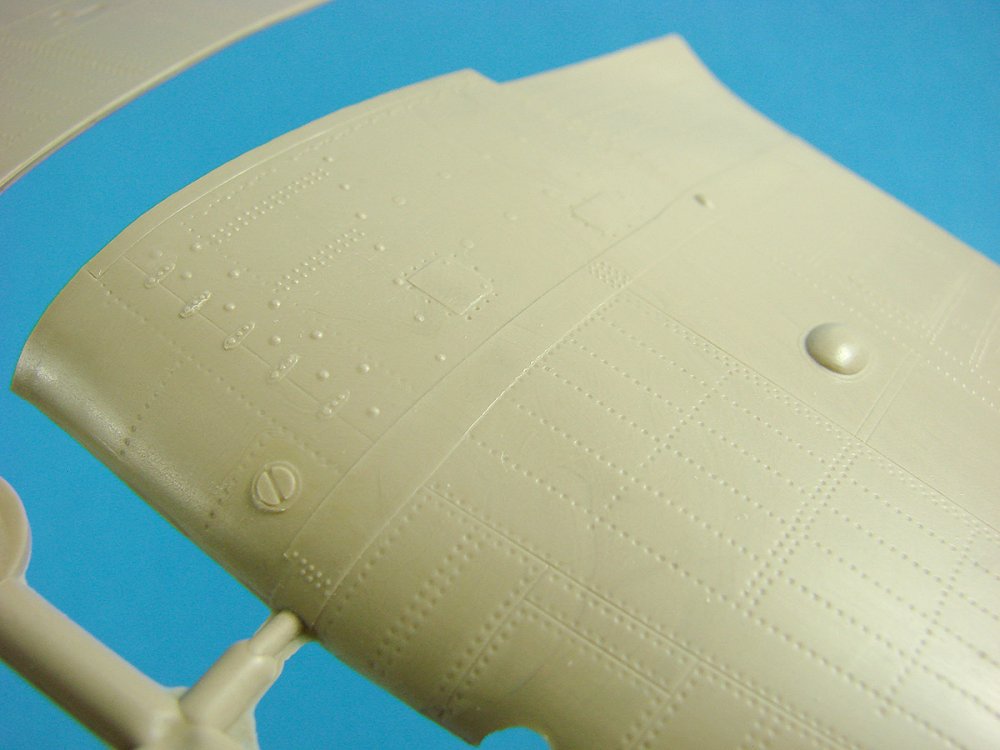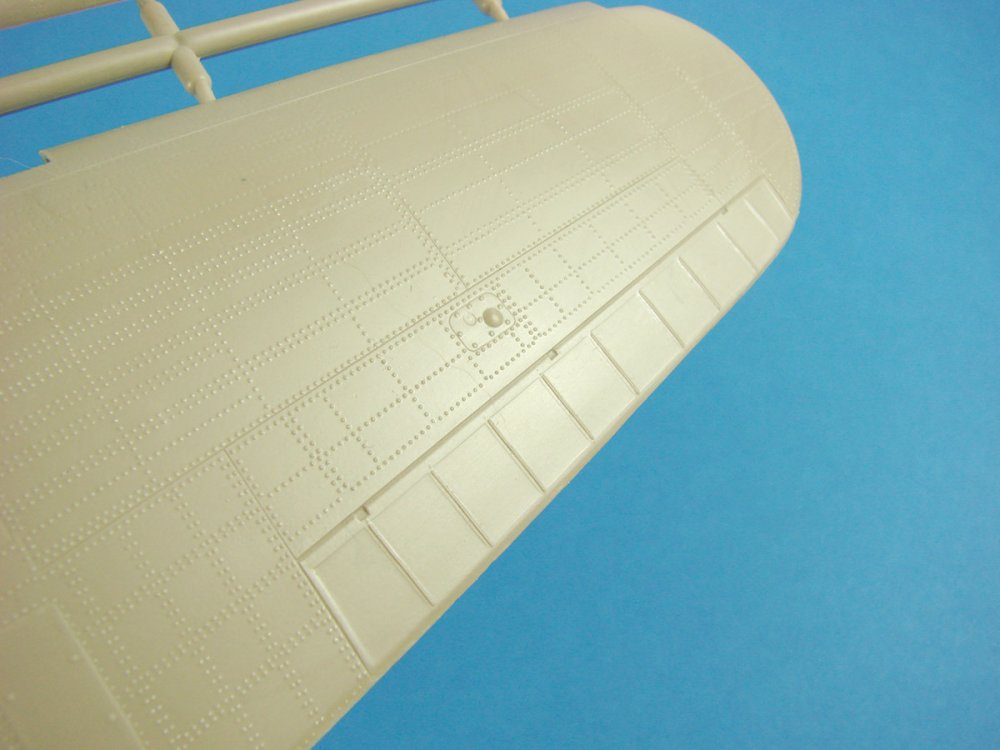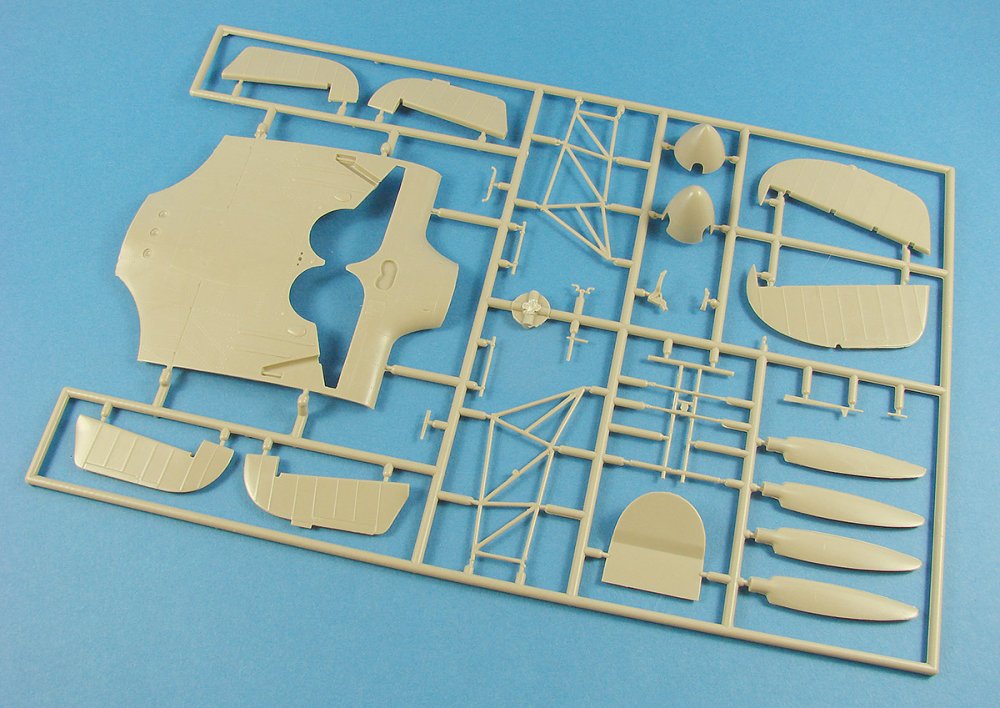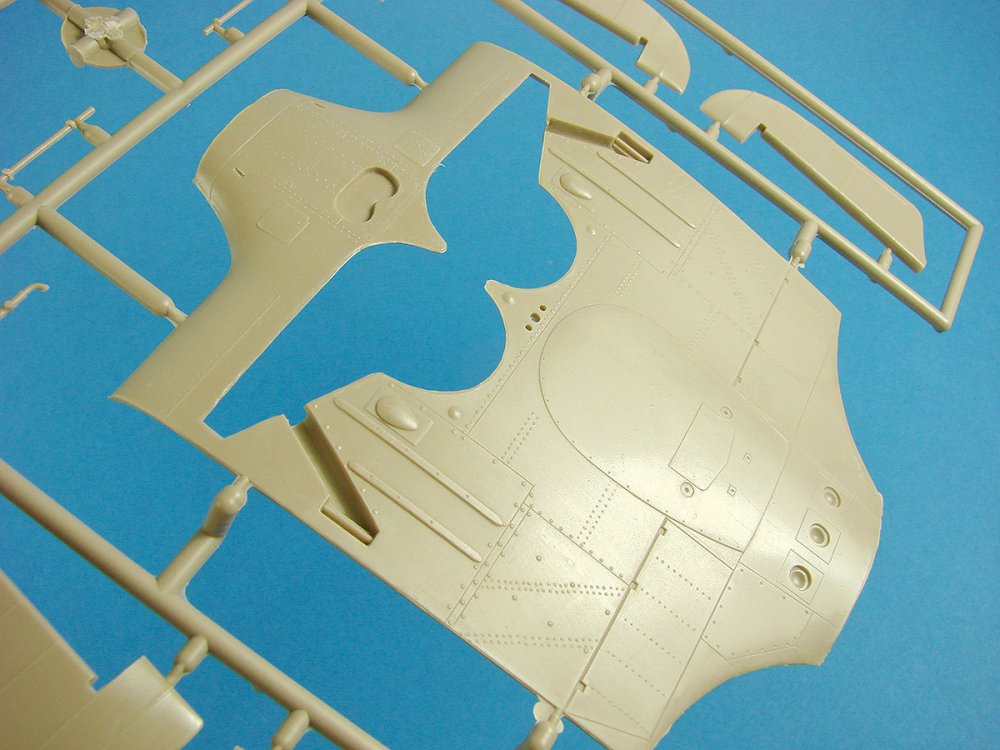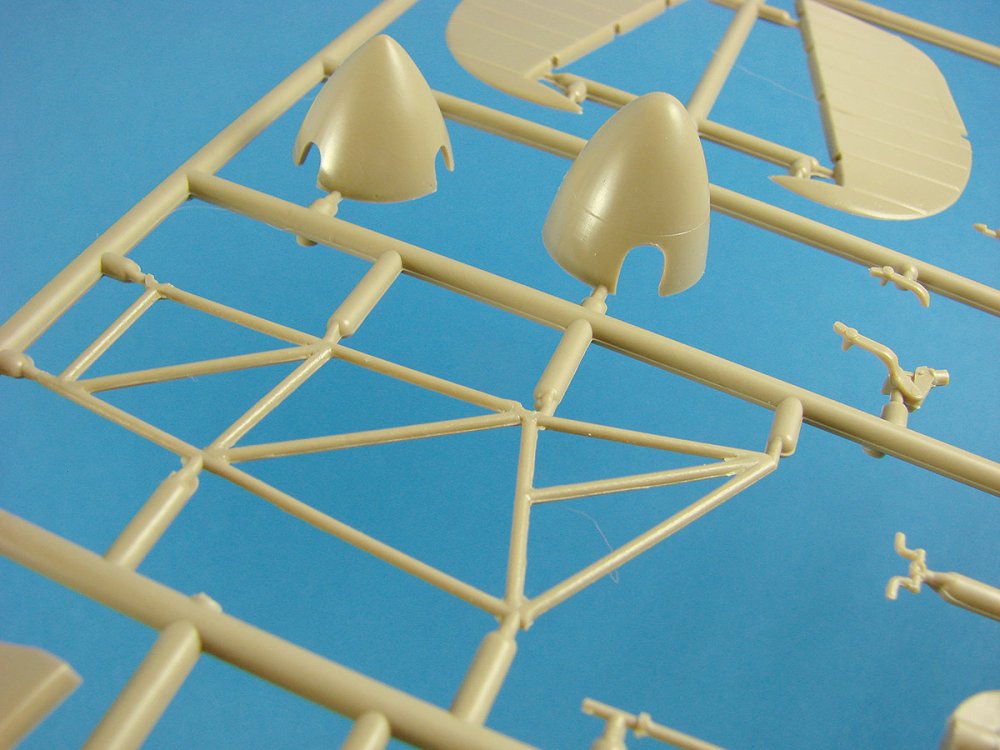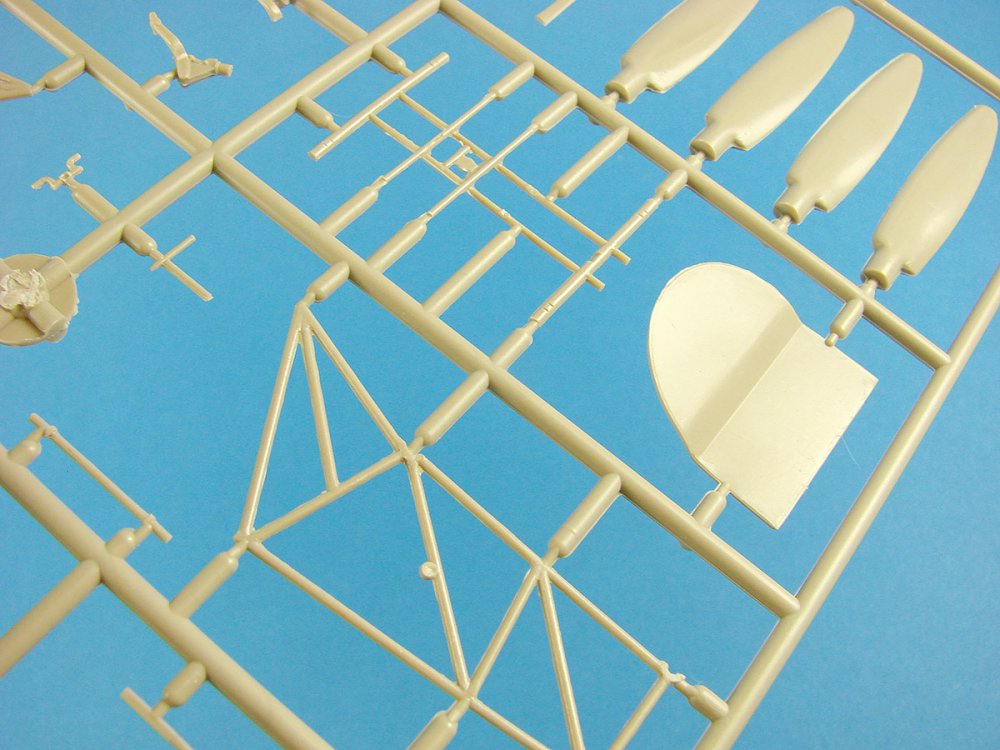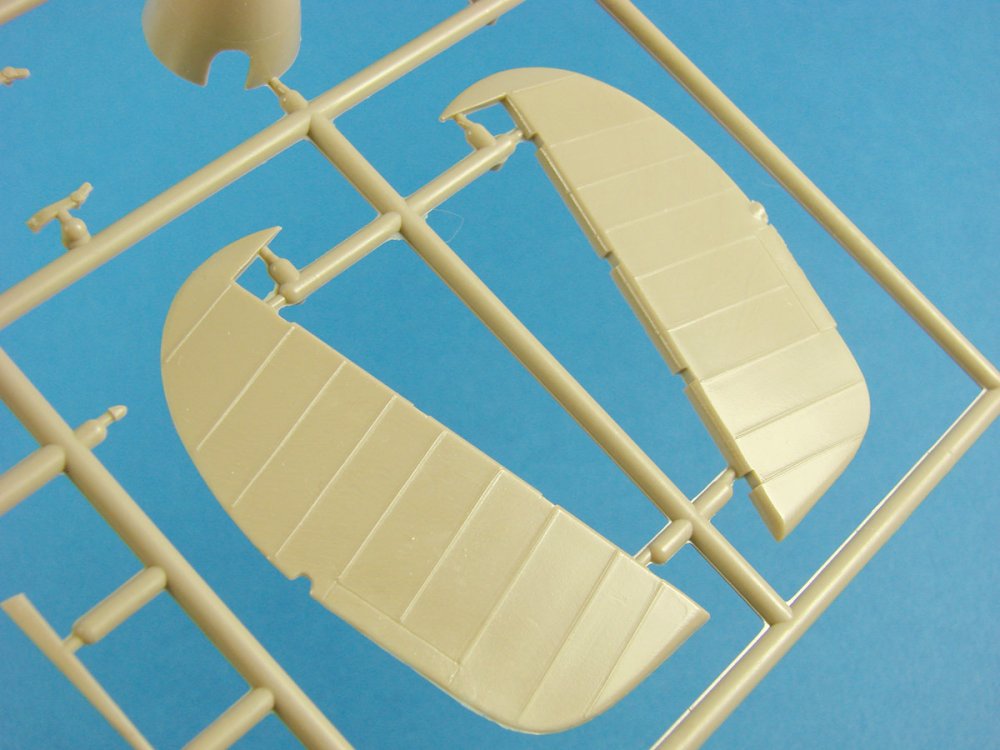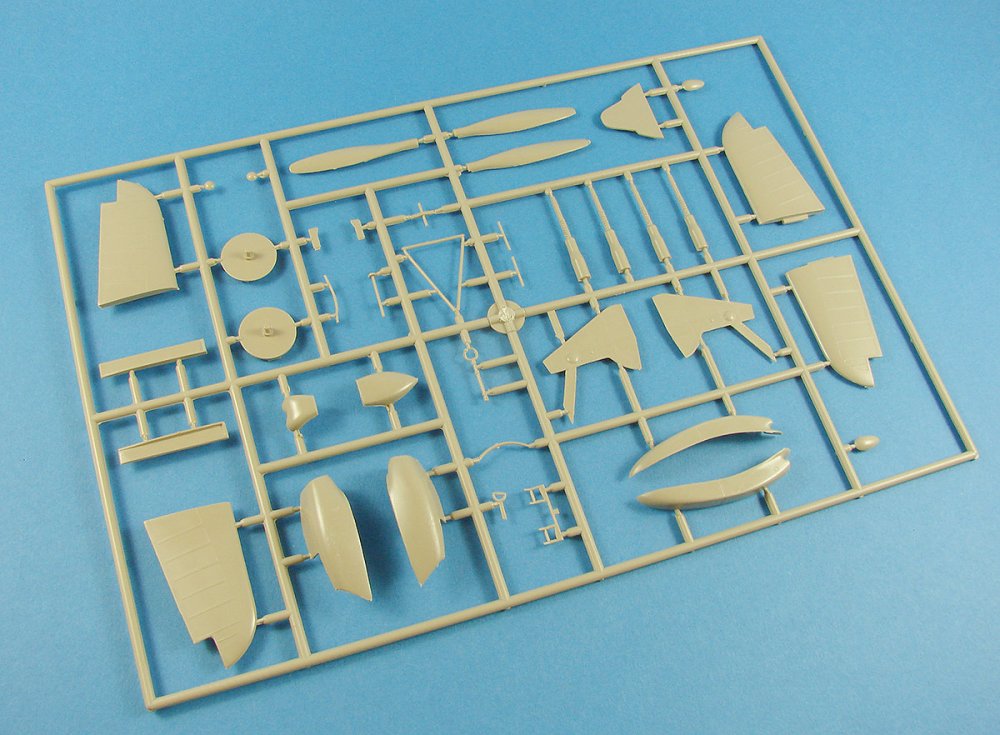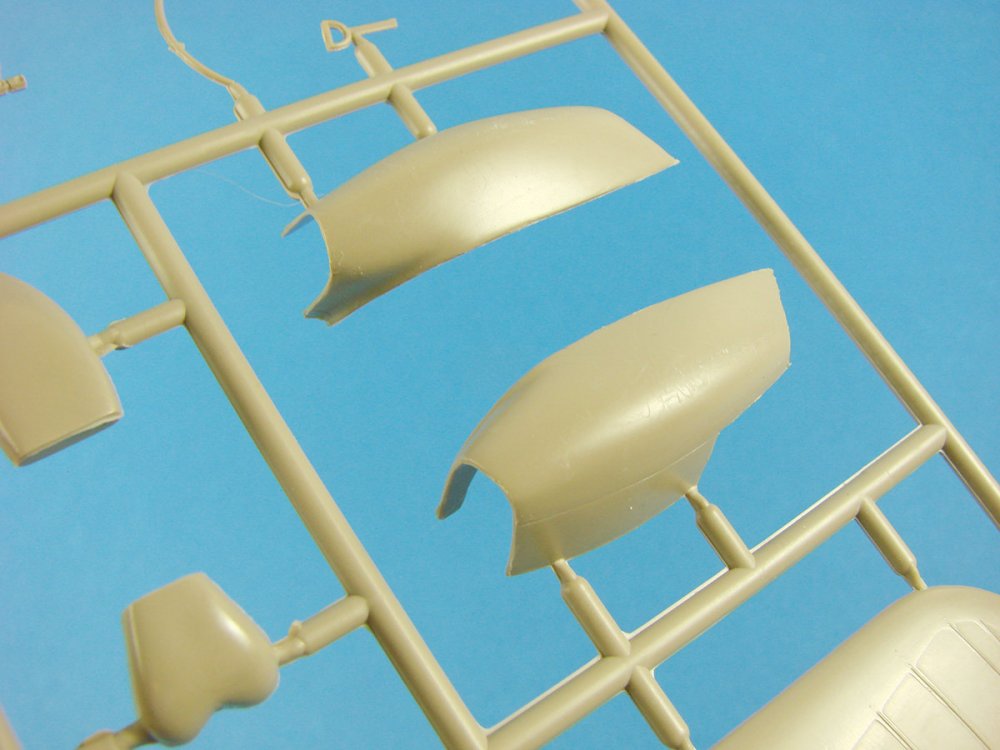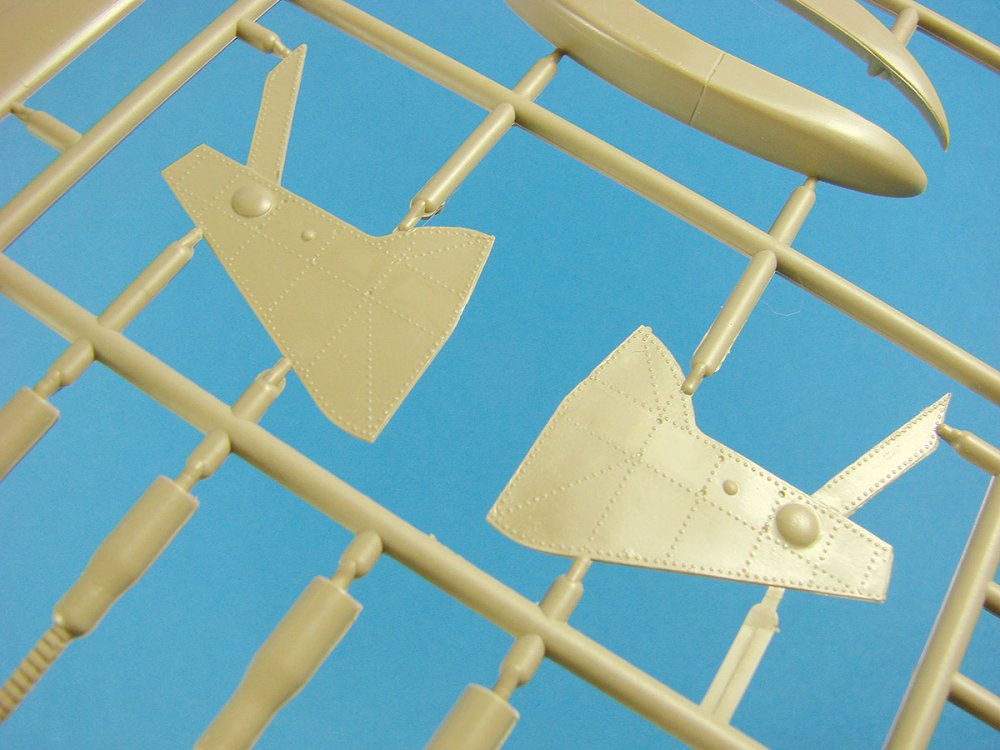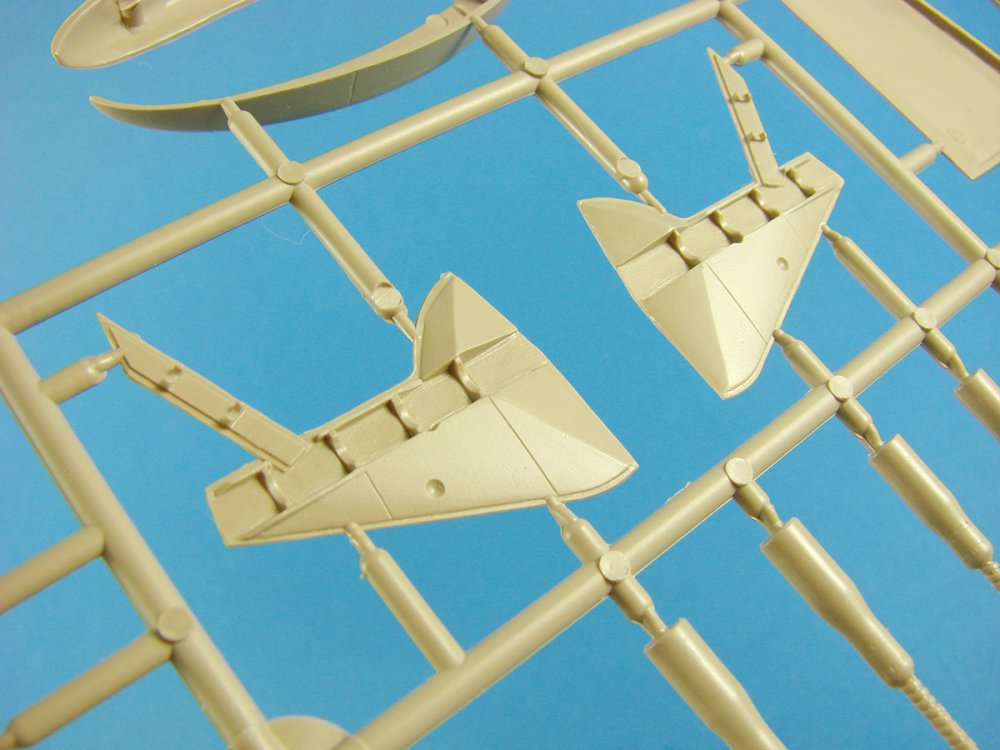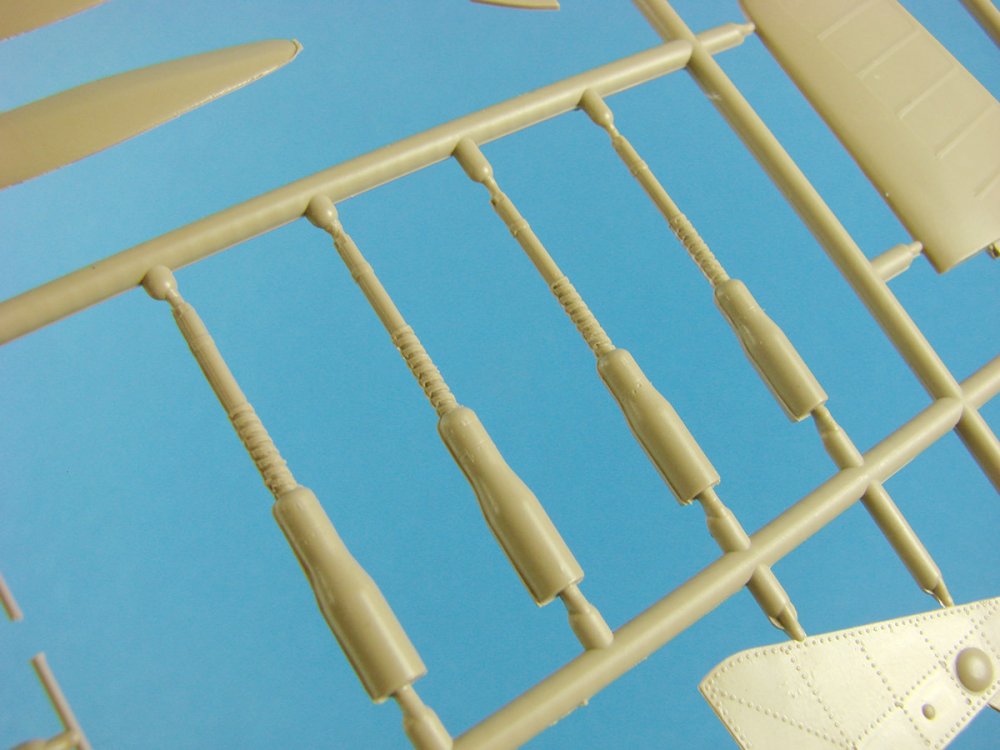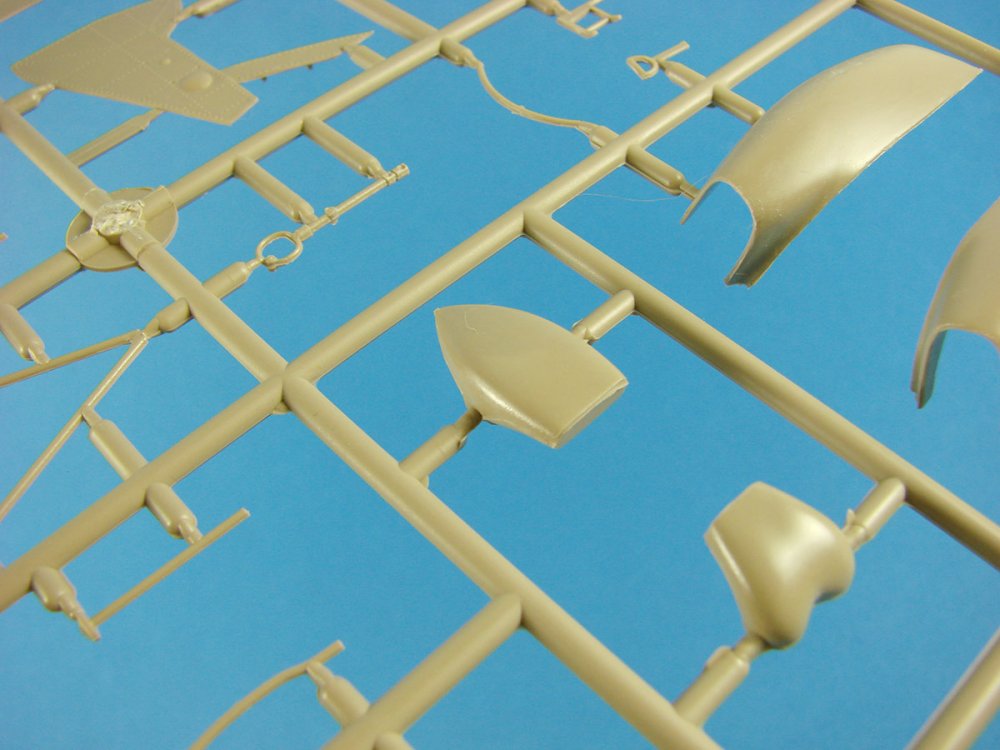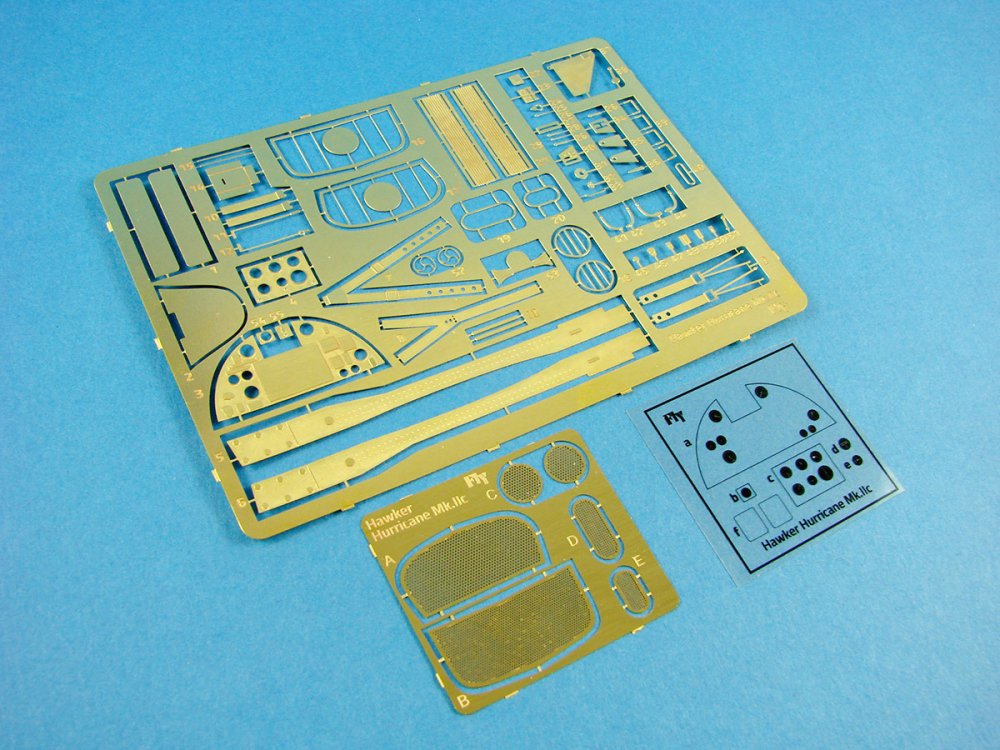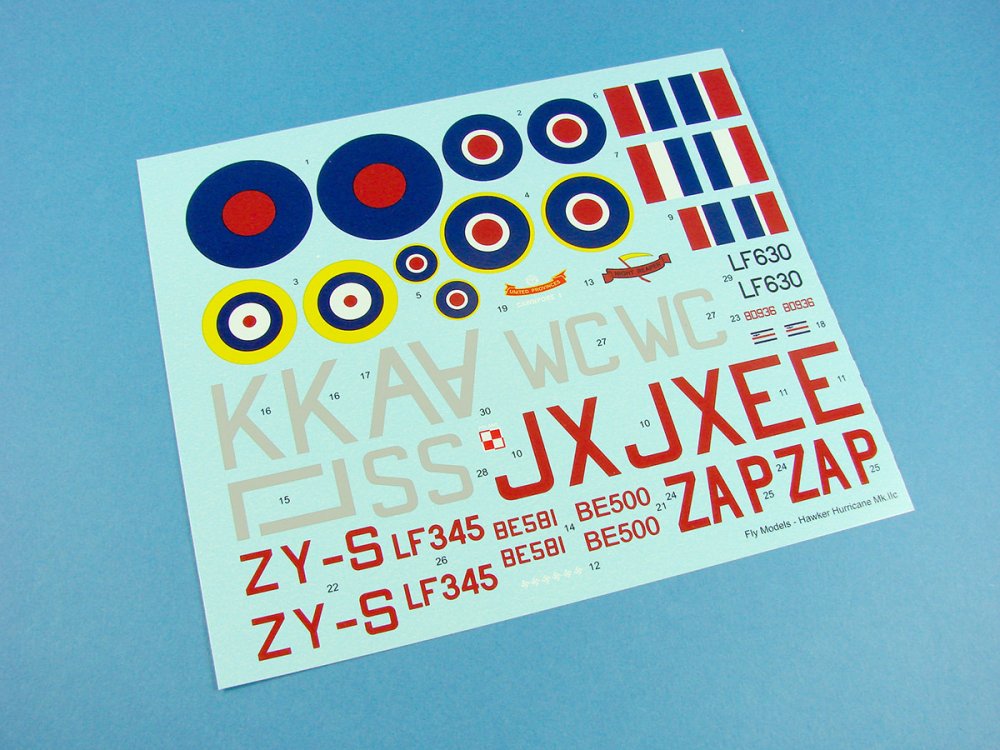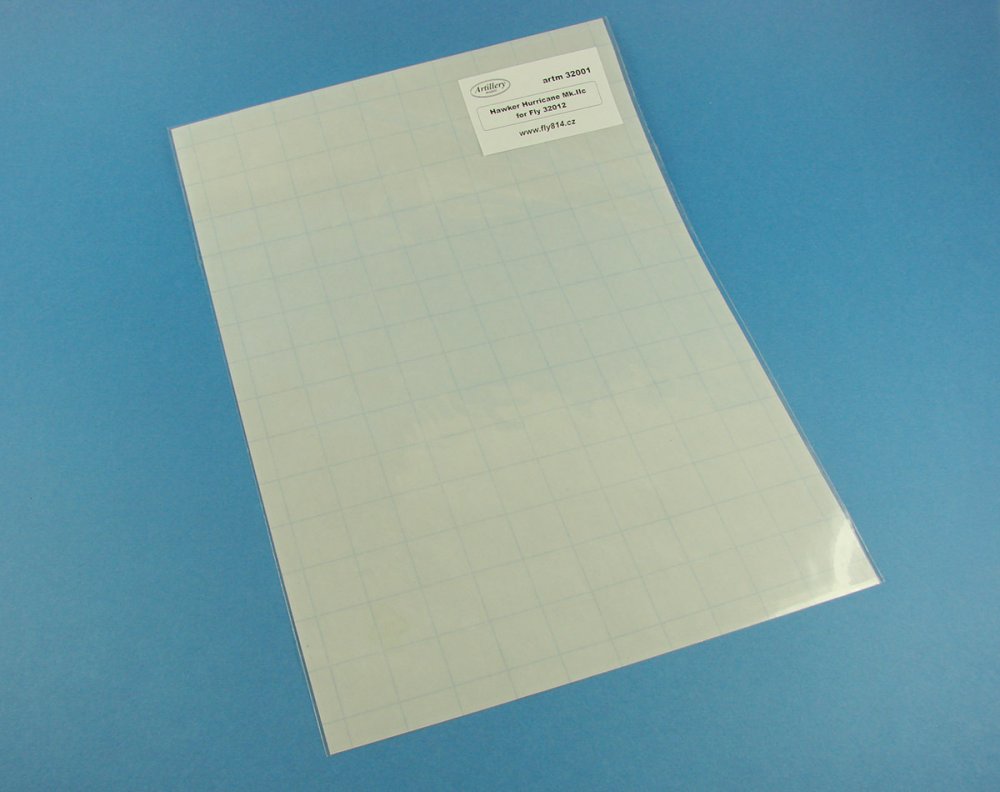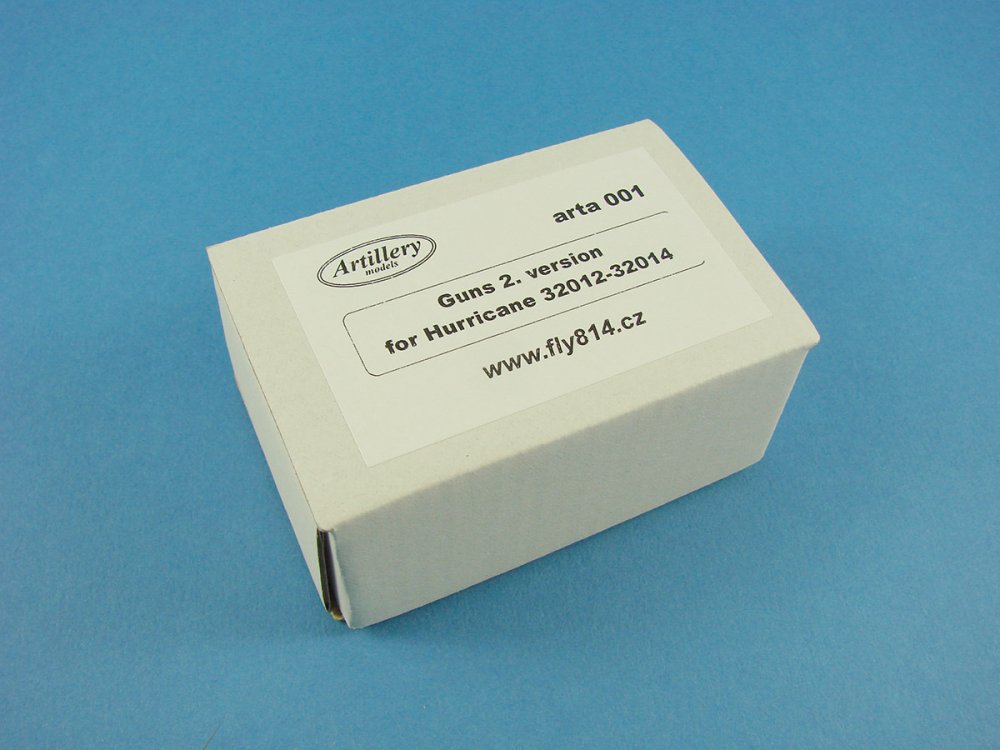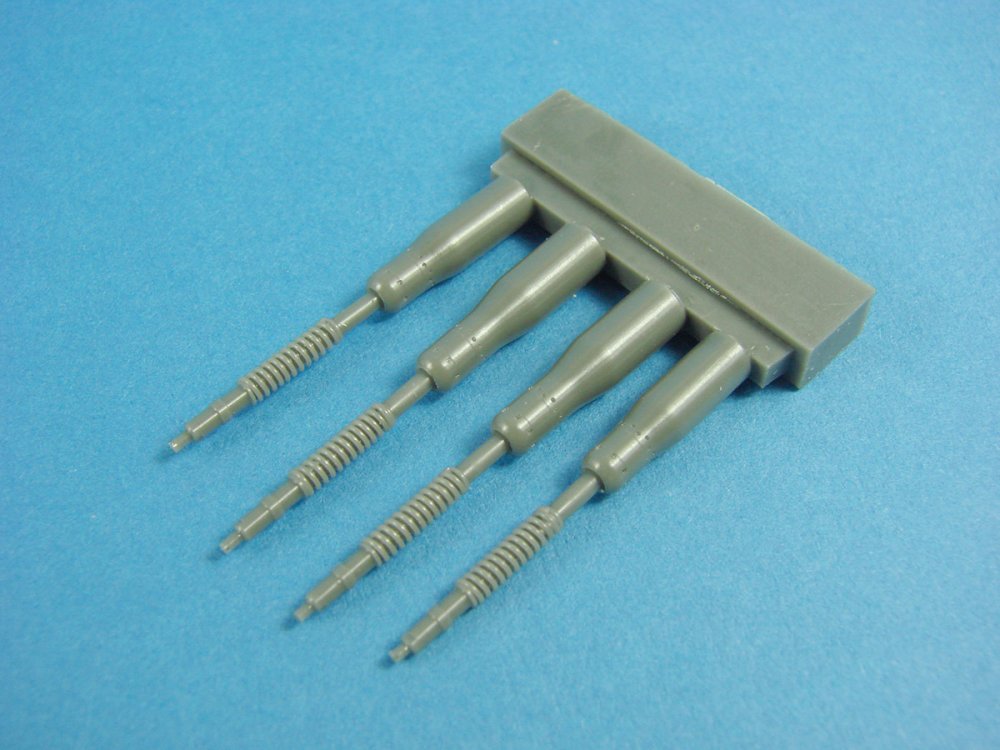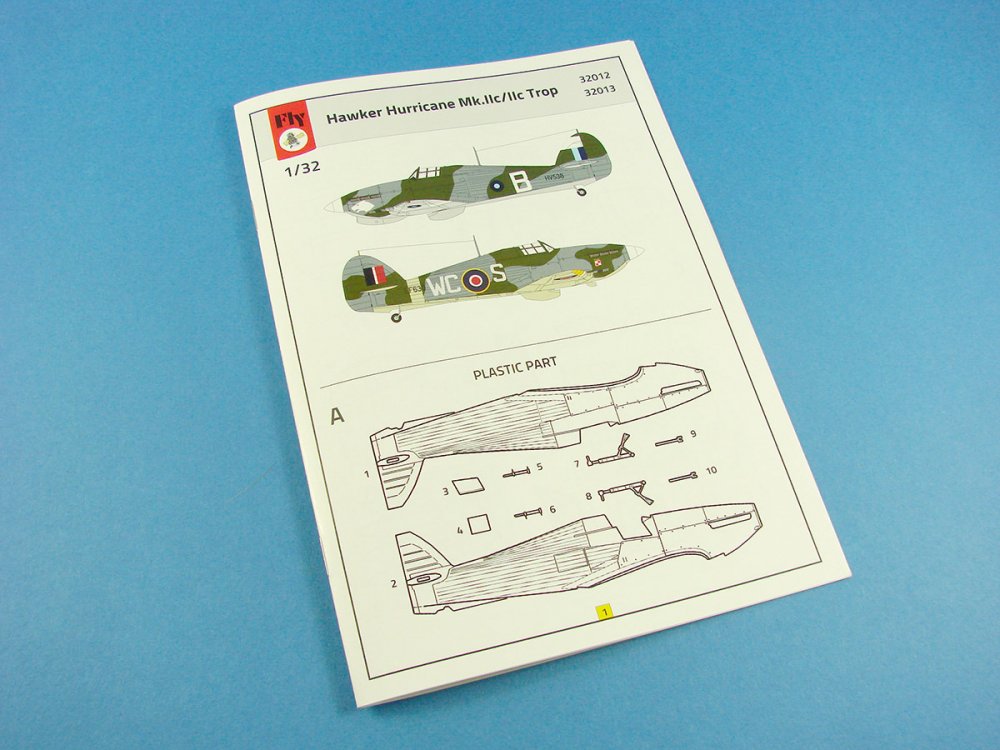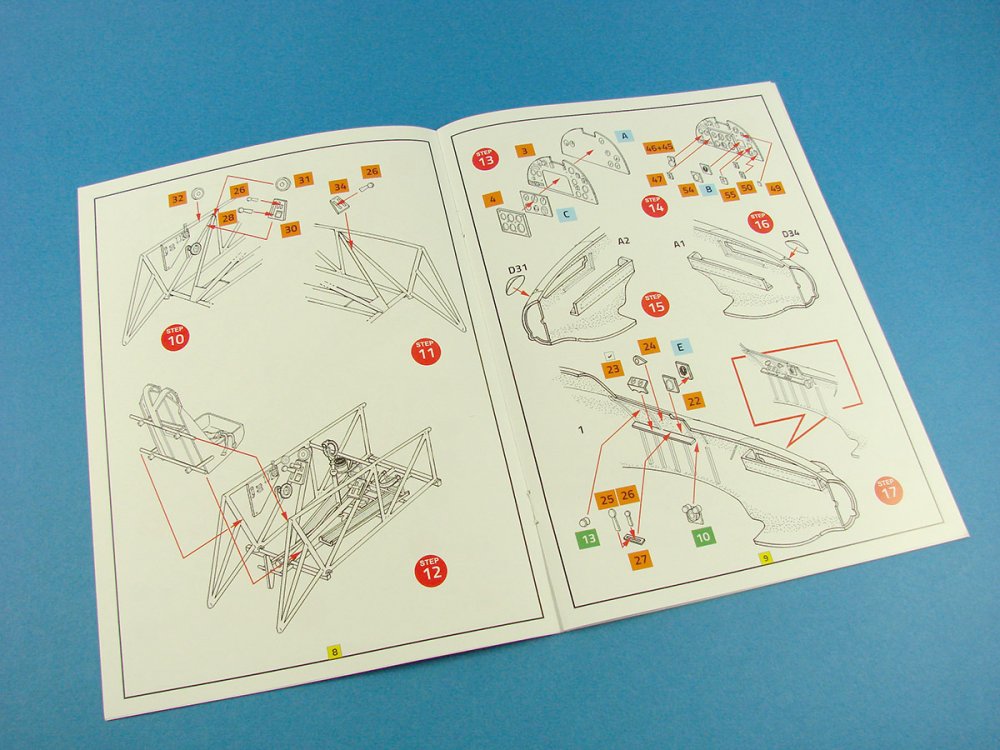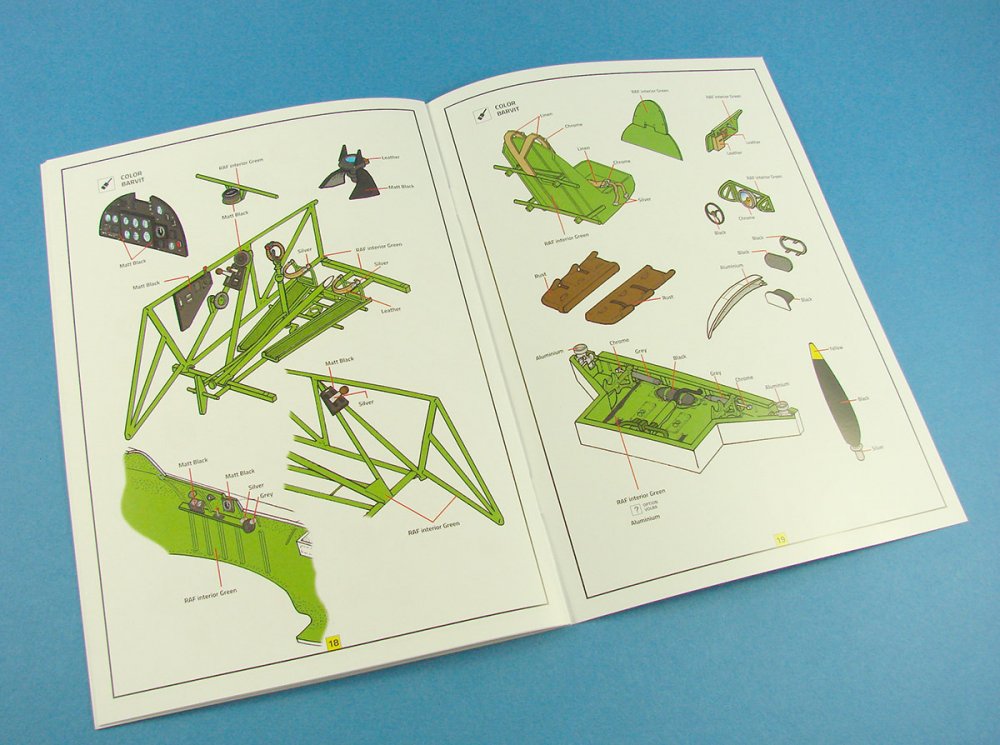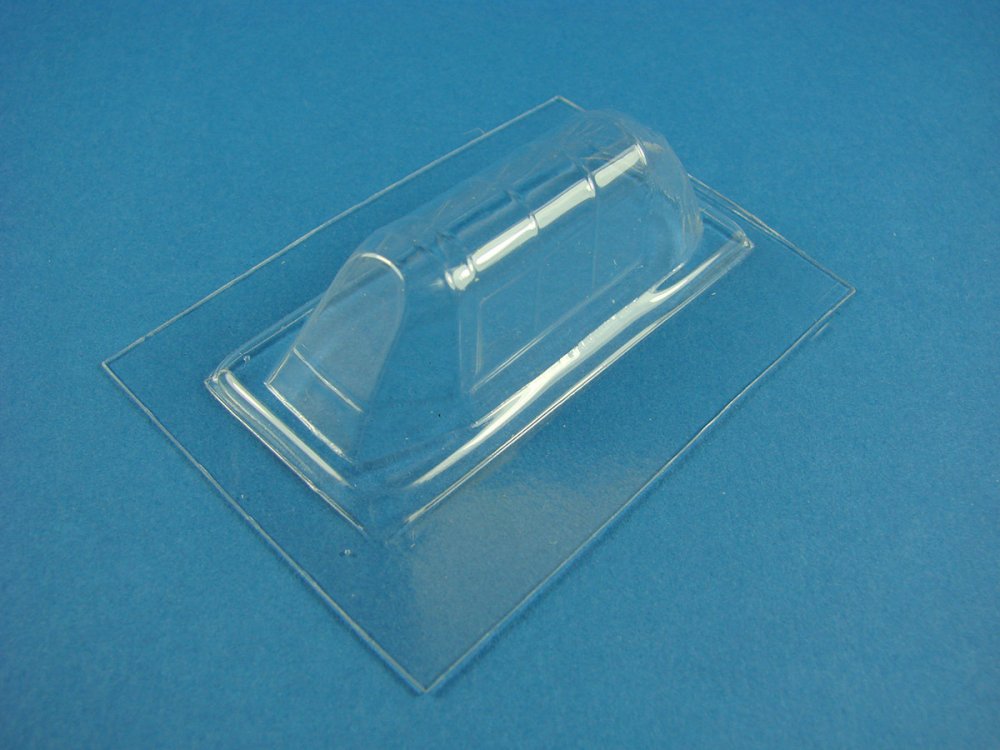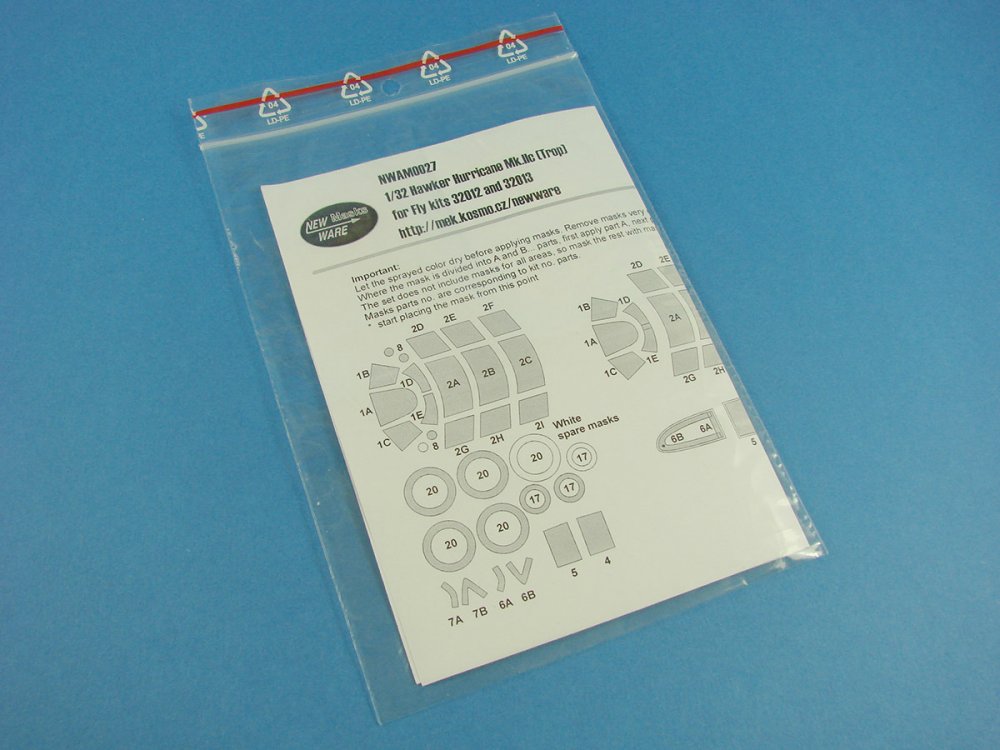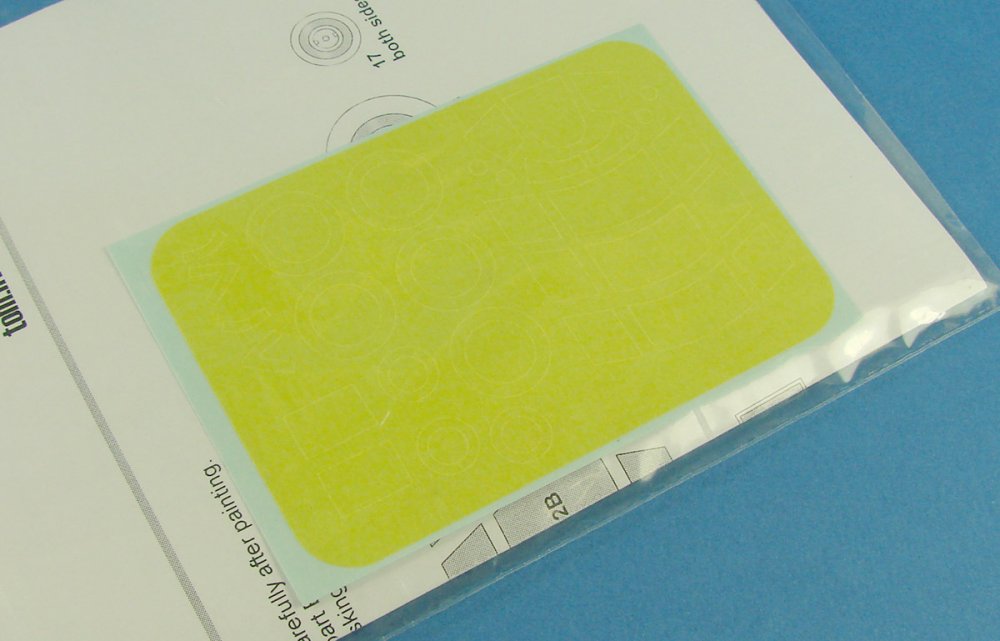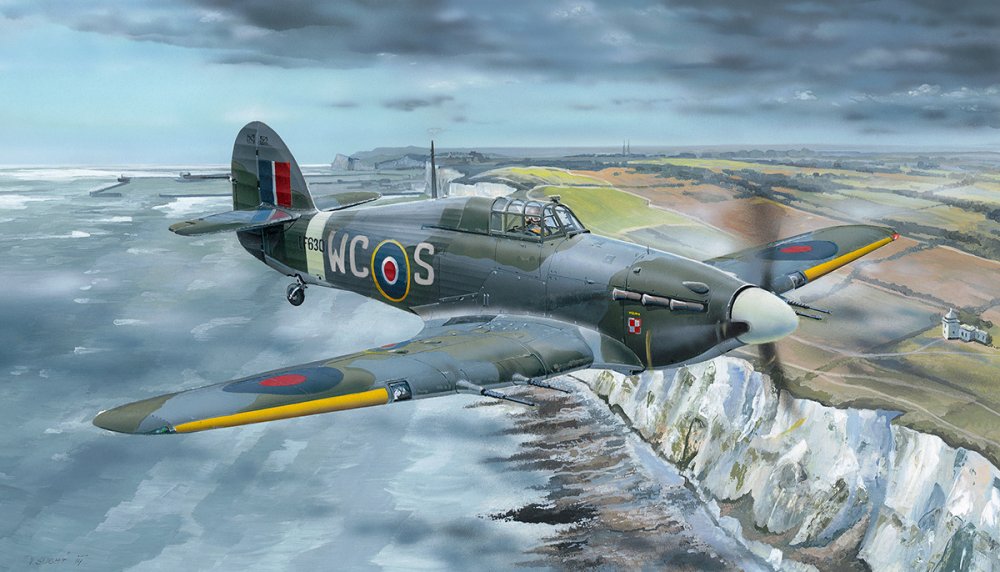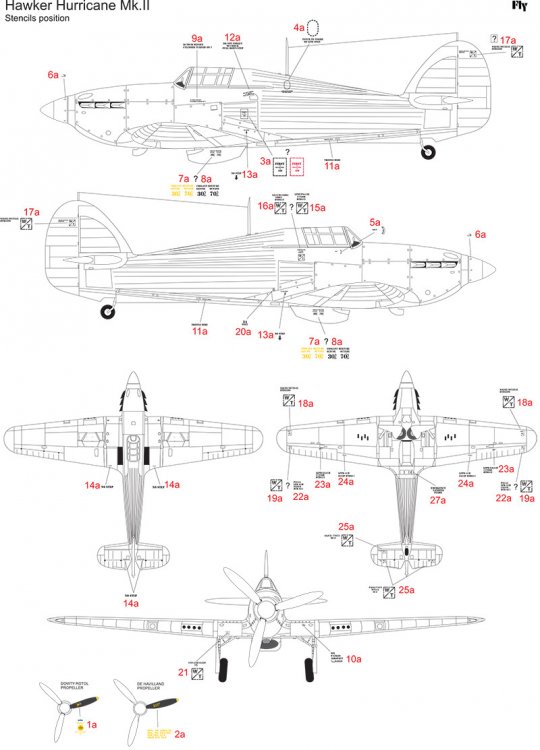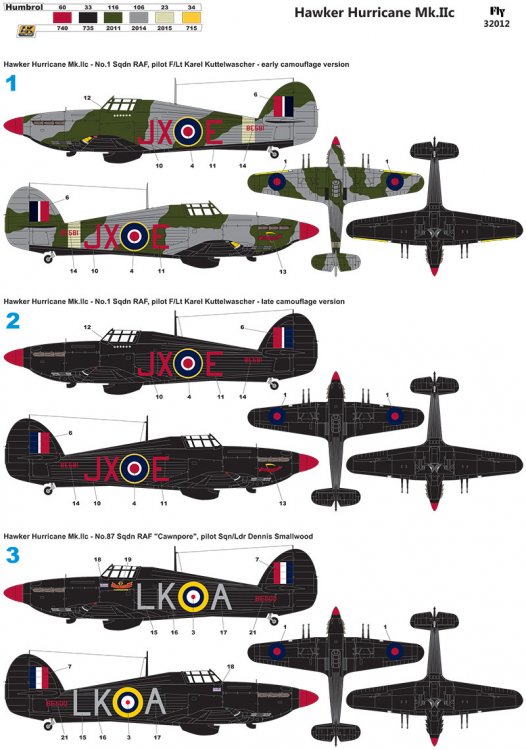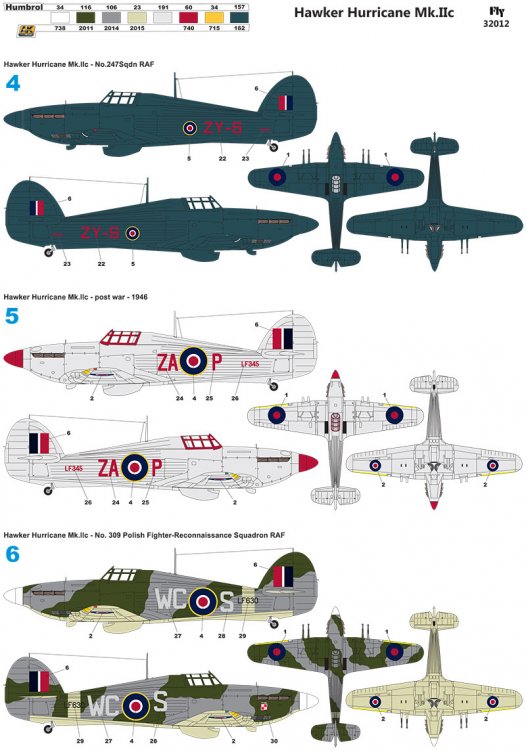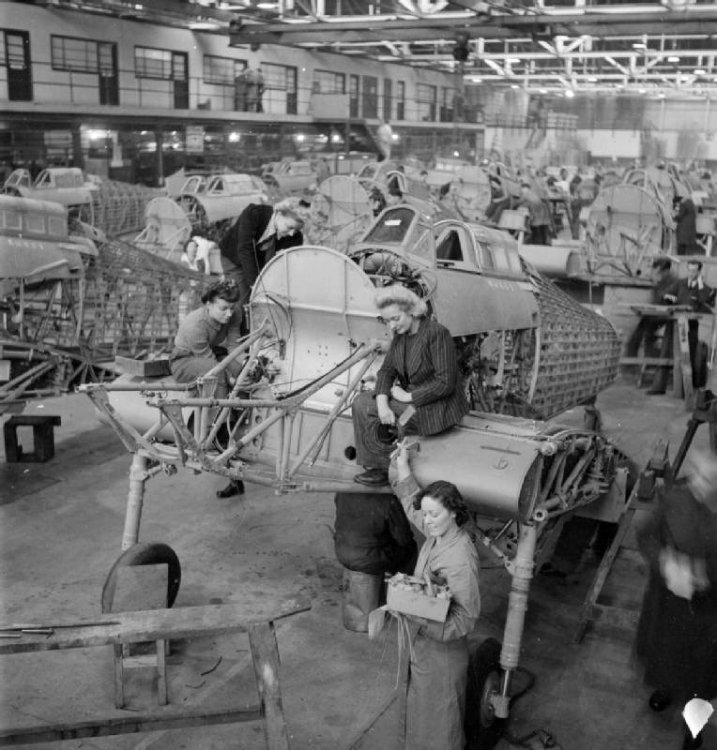-
Posts
3,255 -
Joined
-
Last visited
Content Type
Profiles
Forums
Events
Gallery
Everything posted by James H
-
Damn nice. Love the scratches and shit. You are a modeller at the top of their game!
-
Having built the Eduard release, I know this kit builds beautifully. Nice to see it get the AK treatment with those great schemes too.
-

Kagero Topdrawings 30 - Dornier Do17Z/Do215
James H replied to JeroenPeters's topic in Tools, Books & Misc.
The Do 17 is one of my last remaining Holy Grail subjects. I'd die a happy man if I got the chance to build that in 1:32. Very nice review of what looks to be a superb title. Love the 1:32 drawings too!- 4 replies
-
- 2
-

-
- topdrawings
- do215
-
(and 2 more)
Tagged with:
-
1:48 SAAB J29F ‘Tunnan’ Pilot Replicas Catalogue # 48-A-002 Available from Pilot Replicas for 599.00kr (around £50 at time of writing) It was generally known as the ‘Flying Barrel’, and it’s not hard to fathom out why, with it’s rotund fuselage and excessive girth, in comparison to the rest of the airframe. Looks can be deceptive though, as the J29 was an agile operator that meant it was used in both fighter and fighter-bomber roles. If the design looks rather ‘Luft’46’, that’s because it well could be. Comparisons have been drawn with some of the designs that graced Kurt Tank’s offices in 1944, especially the proposed Ta 183. It’s no secret that the Swedes had access to secret Luftwaffe papers, and that these may well have had an impact on the design of their second-generation fighter aircraft. First flown in 1948 by an English test-pilot, the J29 was a swept wing, transonic aircraft that was powered by a scaled-up version of the De Havilland Goblin engine, known as the Svenska Flygmotor RM 2B turbojet. After initial experiences with crash landings and a general inexperience of flying swept wing jet aircraft, the J29 went onto become an effective machine, whose pilots trained using dual control DH Vampire aircraft due to a lack of two seat Tunnan. Over 660 were built between 1950 and 1976, and whilst flying primarily with the Swedish Air Force, it also operated with Austria, and the United Nations in the Congo (ONUC). The J29F, which is the subject of this kit release, featured an afterburner and a dogtooth leading edge wing design that increased its critical mach number, increasing typical wing airflow speed to a point not exceeding Mach 1. The kit This is my first brush with Pilot Replicas, being until recently, a company I’d never heard of. After contacting Claes Wahlund, they agreed to send two of their kits to us, as well as some supporting aftermarket upgrades. Today, I’ll be looking at the more recent SAAB J29F ‘Tunnan’. I’ve had a fascination with this aircraft for a number of years, partially because of its status as an early jet fighter, and also because I once built the multi-coloured 1:72 Matchbox release in the 1980’s. Face it, the Tunnan has a great shape. It looks like I feel after a twelve-course Indian banquet. They say first impressions last, and my first impression of this kit is very good. A gorgeous, rigid and glossy box that has a top opening flap and full length locking tab, with a nice little Pilot Replicas seal that you need to break/cut in order to get into the goodies. Box artwork is very attractive yet quite simple, and the three schemes supplied are also shown. Inside, there are FIVE light grey sprues, all individually packed into re-sealable clear sleeves, and a single clear sprue, housed it its own ziplock wallet. Root down a little further, and you’ll find two super-glossy publications for the instructions and painting guide, plus two decal sheets and a small PE fret. As a nice little bonus, I have also been given a set of decals from the NEXT release of this kit, depicting Austrian machines. Sprue A These sprues aren’t actually given an identifying letter, so I have done this simply to split them up for this article. For this one, I’m looking at the fuselage sprue. This has been broken down into quarters, with the front and rear sections both being supplied as halves. External detail is excellent with perhaps some of the finest panel lines I’ve seen, next to those of Eduard’s latest generation 1:48 releases, and the same applies to access panel and cover detail. Finely raised panel fillet detail is neatly represented, as are the numerous, small recessed areas. The model is indeed riveted, but not in a manic, machine gun style. Different size fasteners are moulded, in both tight and loose rivet formation, and really do look great. The rudder is moulded in situ on this model, but for a jet fighter, I can’t see this being an issue. Wings will be inserted in the traditional tab method, but extra internal ribbing means that the wings have extra support when attached. Also moulded as separate parts are the two underside nose sections, incorporating the gun fairings and openings. These are moulded hollow, and despite the tooling moulding the holes as vertical through the part, the exterior looks very good. Numerous fasteners adorn these panels. For general alignment, all parts have pins and sockets. No flash can be seen anywhere on the parts, with only the sprues themselves sporting flash. There is no internal detail within the fuselage, as this is added from the separate cockpit tub and wheel bays. Other parts on this sprue include a two-part tail pipe insert, and the tiny tail trundle wheel that protects the rear fuselage from hitting the ground on landing. Sprue B The wing panels are moulded as traditional upper and lower halves for both port and starboard. Detail is amazingly refined, with those same delicate panel lines and rows of very understated riveting, along with larger fasteners and some port access detail. Leading edge fences are moulded separately, and locate with a single pin position at the point where the wing is dog-toothed. Flaps and ailerons are moulded separately, and of course can be posed if necessary. These locate to fork handles that protrude from the flat trailing edge wing section, for positive and accurate placement. A nice touch is that the only sprue gate attachment is at the wing tap, and only a few ejector pin nodes need to be removed from the trailing edge area that will be hidden by the flaps and elevators. If you want to fit any external stores, you will need to drill out the pylon locating holes in the lower wing, before assembly. Sprue C This primarily concerns the various flying and control surfaces of the Tunnan. Here, you will find the landing flaps and ailerons that are split into halves, allowing their capture on the wing locating forks, plus also a single piece stabiliser with integral elevators. The stabiliser is designed to simply slot into the gap in the rear of the vertical fin. Also included here are panels for the starboard forward fuselage, possibly indicating that we might see other versions of this in future? Sprue D & E The reason for writing these sprues together is that a good number of key parts, of which there are two, are split amongst the other various remaining parts. For those that like interior detail, I think a very reasonable effort has been made of the cockpit, built onto a broad tub base that is added onto with the rudder pedals module and sidewall parts/consoles. Detail is really very, very good with finesse being something that tends to spring to mind. Nothing looks clunky in here, and the seat itself is suitably simple with its ejector ram unit. Seatbelts are supplied as photo-etch parts. Other cockpit details, such as the instrument panel and coaming, flight stick and turtle-deck detail are also commensurate with the standard of cockpit detail. The gun sight is supplied as a clear part, for which detail detail is separate. This also applies to decals for the instrument panel itself. This is moulded with blank instrument faces, which is what I prefer for extra detailing. The main gear bays are nicely rendered, with rib, valve and pipe detail, and these just glue internally into the fuselage. Gear bay doors perhaps need a few rivets externally, but internally, they are indeed moulded with detail. Undercarriage struts themselves are delicately detailed and will just require some minimal seam removal, and care should be taken with the nose gear wheel guards. These look very fragile, but are moulded with some real care. For some of these smaller parts, I’d look at using a fine razor saw for removal. Weighted wheels are included too, so no need to start filing plastic away. Be careful that you orientate these properly when gluing, as there is no locator pip, and lack of attention will mean that the flat section won’t lie on the ground. Tip: fit these last using something like Revell Contacta cement, which allows for a little more time in tweaking than with Tamiya Thin Cement. An intake pipe is included, moulded as halves and with an impellor fan at the far end. A little flash can be seen on some of the more delicate parts, but this is very minimal and will be easily removed in a few seconds. With this kit, you’ll tend to find it’s only the sprues that are flashy. The parts themselves are extremely clean, and very reminiscent of mainstream, high quality tooled parts. Clear Sprue Of course, you can probably judge a model kit like this from the clarity of the canopy parts, and here, they are crystal clear, and distortion-free, inasmuch as a curved canopy can be. Canopy frame lines are well-defined and should be easy to mask, and the parts are flash-free. As the canopy parts are nice and thin, I would use a razor saw to remove them from the sprue, due to the elongated sprue gate connection. Other clear parts include the gun sight, wingtip lights, landing lights that are seen when they are deployed, and a clear panel that sits to the rear of the nose-gear. Photo Etch A set of seatbelts is included on this small fret, along with some PE handles for the canopy, and a securing strap for the seatbelts. Production is good, and the parts are protected by a covering of peelable clear film. Decals & Schemes This release contains three scheme options, and to illustrate these, a super-glossy A4 pull-out is included, that opens to A3 in size. On the first page, the Tunnan’s stencil placements are given, along with an indicator of the real aircraft being finished in unpolished aluminium. For this, it is recommended that Vallejo 77.716 is used, although I don’t doubt you’ll find a suitable paint from either the Mr. Paint range, or from the AK-Interative Xtreme range. The remaining pages show the three schemes and their decal placements. The included schemes are: SAAB J29F, 29547, 1st Squadron at F3 wing, Malmen/Linköping, September 1956 SAAB J29F, 29621, Swedish Air Force Academy, F20 wing, Uppsala, summer 1956 SAAB J29F, 29422, 3rd Squadron, F15 wing, Söderhamn, spring 1959 The decals themselves are supplied on two sheets. The first sheet contains the national markings and stencils, as well as the instrument/cockpit decals. Also note that various coloured panels are given for various wing and fuselage areas, as well as for the nose intake ring area. I’m not a massive fan of panels that fit over compound curves, but you could use these as reference for painting your own panels. The second sheet contains nothing but black panels. Again, if you don’t want to use these, you can utilise them to help you with masking those areas yourself. Decals are printed by Cartograph, and as well as being thin, and in perfect register, carrier film is also minimal. A PREVIEW In a week’s time, this kit will be released in another incarnation that depicts Austrian machines. Here is the decal sheet that will be supplied, containing national markings, stencils, instruments and Day-glo panels. Instructions As with the schemes sheet, this is also a super-gloss A4 publication that opens out to A3 in size. The cover tells the history of the Tunnan, and the 29 construction steps are shown over the next 3 pages, in shaded CAD illustration style. Decal and PE placement is clearly seen, and the model looks straightforward to build. Colour codes are supplied in painting, referencing Tamiya, FS, Humbrol and Vallejo paints. Conclusion Well, we’ve not exactly been inundated with nice kits of this gorgeous aircraft, and where we have, they have left a little to be desired. Here though, it looks like we finally have a 1:48 Tunnan that we can be proud of, and produced with the sort of finesse that we expect from a modern tooling. The kit is pretty straightforward to build, but doesn’t compromise on detail,. I really can’t wait to start test fitting this one and getting a feel for it. I know that my friend Kamil Felix Sztarbała is building this for Military Illustrated Modeller, so please watch out for it, and other builds that will doubtless emerge online. SAAB J29 Pilot Code 48-P-014 Price: 59.00kr (around £5) Pilot-Replicas have released this natty little pilot figure to specifically fit the J29 kit. He is case on a single block, in three pieces; the main figure, head and oxygen pipe, and left arm. Detail is really very good, and shouldn’t take too long to paint and assemble. The figure is packed into a rigid, clear envelope, with a single sheet telling you what glue to use. No colour information is given, so you will need to source this yourself. SAAB J29 Droptanks Type 1 or 2? Code 48-R-007 Price: 120.00kr (around £10) The reason for the lack of knowing about the tanks type number is that two sets of tanks are listed on the Pilot Replicas site; one with rear fin, and one without. Both are shown as type 2, but I don’t know if that is correct. The instructions sheet still states these are type 2 and they are without the fin. This set is supplied in a ziplock wallet, with an indication as to which tank is for port and starboard. The two parts are cast in medium grey resin, and one tank has a casting block, whereas the other doesn’t. It appears to have been removed already. Detail is very nice, and the casting flawless. The tank and pylon are integrally cast, meaning you just need to plug them to your model. Very highly recommended My sincere thanks to Pilot Replicas for these review samples. To purchase directly, click these links: SAAB J29F 1:48 model kit SAAB J29 Pilot SAAB J29 Droptanks
-
Hi Petr, Things are really looking good with this one. When can we expect a release? I'd love to get this one on the site and built up.
-
1:32 Hawker Hurricane Mk. IIc Fly Model Catalogue # 32012 Available from Fly Model for around £30 The venerable Hawker Hurricane was the very last in a generation of fighter designs that could trace its roots back to the machines that fought in the skies during the Great War. Whilst countries such as Germany were taking advantage of newer, all metal, stressed skin designs, Hawker soldiered on with its hybrid of both old and new. Designed by Sydney Camm, the prototype machine first flew in late 1935, before eventually seeing active service in late 1937. Originally designed to carry only four machine guns, this design was soon modified to carry the eight guns that were stipulated in an amended Air Ministry specification that was written around the new fighter design. Photos by author There is no doubt that the Hurricane was a robust machine with its tubular framed fuselage with wooden formers and doped linen covering. Initial machines also had fabric covered wings. With its wide track undercarriage, thick wing and forgiving flight characteristics, the Hurricane was a favourite amongst its pilots, despite being overshadowed by the more glamourous Spitfire. It was a solid gun platform, and gained a higher kill ratio than the Spitfire, having been assigned the bomber streams as their specific targets. During its career, the Hurricane gained a metal sheathed wing, variable pitch 3-blade propeller to replace the fixed pitch, two blade Rotol, and numerous other changes were made to it for the purposes of low level bombing, tropical operations, and also for operation from aircraft carriers. A four-gun Hispano cannon installation also graced many machines. By the end of production in 1944, over 14,000 machines had ben built. The era of the timber and metal fighter was now over, but the Hurricane left a legacy that still rings chimes with today’s generation of aircraft enthusiasts. When it comes to 1:32 Hawker Hurricane kits, the modeller hasn’t had much in the way of real choice. There has been half a dozen or so boxings of the old Revell kit that was first released in the early 1970’s, followed by three more releases from Pacific Coast, covering the Mk.I versions (including rag wing version). I have heard modellers say that they wish that Fly Model’s releases had covered the Mk.I also, but in light of the PCM kits, it would seem a pointless task for an initial foray. I don’t know if they plan that in future, but I can say that we will see more than one new Hurricane version being released, after these initial two kits. Jeroen Peters will review the Tropical Hurricane in the near future. For now though, let us take a first look at this brand new tool kit from Fly. The kit With Fly Models kits, you expect to do a little extra work. Whilst Fly’s finesse of detail improves with every release, you will need to clean up a little more flash here and there, and spend more time preparing parts. For me, that’s no big deal. I recently built their Wessex kit for Military Illustrated Modeller, and even with the clean up, it was probably one of the most enjoyable and engaging models I’ve built in many years. The kit itself comes in an attractive box that carries an evocative image of a Mk.IIc flying over the white cliffs of Dover, sporting a later grey/green camouflage scheme, and operating with a Polish RAF squadron. On the side of the box, you’ll see no less than SIX schemes that are provided for this release. As this kit is a multimedia affair, the sprue count is quite modest, with just four sprues included, moulded in a tan-coloured styrene, and a single clear sprue. Whilst the latter is packed into a small ziplock wallet to protect it, the remainder are to be found in a single, clear bag. Whilst these parts are quite loosely packed, no parts have suffered damage. Also in this bag is another ziplock wallet, containing numerous resin parts, produced by Artillery, as with other Fly Model releases. Another sleeve contains a colour painting guide, stencil guide, three decal sheets, instruction manual, acetate instrument sheet, and two frets of photo-etch parts. Sprue A First of all, you need to know the moulded parts have no numbers on the sprues. You will need to refer to the numbered parts plan on the instruction manual. First World problems, eh? This sprue contains both fuselage halves, undercarriage struts and actuators, cockpit door and radiator flap. The fuselage is a full-length moulding, sans rudder, and the external is really very nice. I noticed a new finesse with the Wessex, and this continues with this release. The forward fuselage consists of various panels, finely scribed, and containing Dzus fastener detail. Looking at my reference photos, a few extra rivets could be added in key areas, using Archer rivet decals, maintaining the raised rivet theme of the Hurricane. Two spots on the upper, forward cowl indicate where the cowl bulges will need to fit, so no ambiguity there. But what of the stringer and fabric detail? Well, I think it’s superbly represented, without any unrealistic hard edges. I think Fly tackled this very well. The same applies to the vertical fin, with its ribs and wooden covered leading edge. I quite like the access panels on the rear fuselage, with their fastener detail, and also the metal fairings that extend around the edge of the stabiliser position. Internally, the Hurricane doesn’t have too much in the way of detail, with this being almost exclusively supplied by a multitude of plastic, resin and PE parts, with resin being perhaps the predominant media in this area. We’ll look at the resin parts in a short while. Note that the model has no locating pins anywhere. This is very typical of this type of kit, and I’ve never found a problem with a lack of these. Here you can see the detail for the cockpit door and undercarriage parts. Whilst the undercarriage looks properly proportioned and has the key elements, I would perhaps enhance these further with tape strips and lead wire. Sprue B Wing panels. That is all you will find here, and these are moulded as traditional upper and lower panels, but the lower centre section is a separate part that we’ll look at soon. Now, you will notice something that you don’t usually see on models these days, and that is the numerous rows of raised, domed rivets, instead of the usual divot that tends to be cheaper to tool for mass moulding. It’s not all raised rivets though, as an effort has been made to replicate the countersunk style also, and again, I think Fly have done a great job here, and it certainly sets it apart from contemporary kits. A number of other surface details exist, such as filler ports, fasteners, and other plating such as the stiffening plate on the upper wing. The wings look quite agricultural, as befits the design of the Hurricane. Note that the ailerons are integrally moulded to the wings, and to pose them dynamically would take extra work, and seem quite pointless. I would maybe run a very fine razor saw down each side of the aileron, to make it look a little more ‘separate’ to the wing. Underneath the wing, the same standard of detail can be seen, with only the cannon shell chute ports needing opening up before construction. Where these outer wing panels meet the centre panel, the joint will be obscured by the application of a PE reinforcement strip, mimicking the one that was fitted to the actual machine. Landing flaps are also integrally moulded, and if you want to pose these, you will have your work cut out, and the need of some scratch-building skills. Sprue C We have a real mish-mash here, with the underside wing centre section taking prominent position. This has easy to locate positions for the main radiator, scoop intake and also three indents for the underside lights. Two spinners are also included, a short sharp one, and a longer, blunted one. It is the latter that will be used here. Four identical prop blades are included, of which only three will be used. I’m quite impressed with the shape of these, and they look right, compared with period photos of the Hurricane. Despite the wings not having posable control surfaces, the rudder and elevators are moulded separately, allowing the modeller to incorporate some dynamic into their build. Again, these are superbly represented, with rib structure and delicately engraved trim tabs. Construction is typical for these, with the surfaces being supplied as halves. A few interior parts have crept onto this sprue, with both main sidewall frames being found here, as well as the tubular base. These will need a little clean-up before assembly, to add a little extra refinement. I actually consider, with short-run kits, that what you get is a starting point for your own additional details, but Fly seem to have the interior of the Hurricane looking excellent, built right out of box. A few other parts are moulded here, such as the tail wheel fork, aerial mast, forward cockpit bulkhead, pitot, seat mounting bars etc. Sprue D First up, the parts that you will not be using here, and these include an alternative spinner backplate and some thinner, needle-type prop blades. Fly obviously has other plans to release further versions of this kit, and I certainly welcome seeing those. Two versions of intake scoop are also supplied, so you will need to check your references before committing to attach either one. Both scoops will also need drilling out to open up the intake area, as these aren’t moulded with any recess due to the nature of the tooling of this kit. As with the Wessex, Fly have incorporated all the parts into this kit that are destined for the other versions. Here, that means that the tropical intake is also included. Useful if you wanted to build a tropical machine, but can only find this release. Of course, you would need to source your own decals, possibly aftermarket, if you went that route. Rudder pedals and control stick are included here, and look a little basic. With some extra work, these could be made to look good, or perhaps see if you can source one of the parts from Grey Matter, depending on whether they are pertinent to a Mk.IIc, having been designed for a Mk.I. Fly have supplied the radiator unit as halves, with a separate cooler flap that can be posed. Internal grilles are a photo-etch composite, with several parts for each of the two grilles. The main undercarriage doors can be found here, with lovely internal and external detail, such as raised rivets, plus the traditional style stabilisers that fit to the fuselage via a tab. For fitting the resin exhausts, there are some plastic plates that fit internally within the cowl, providing a mounting point for the exhausts. Also moulded here are the four Hispano cannon barrels, with their recoil springs. As Fly provide these as alternative resin parts, I think you’d be nuts to use the styrene ones, but if you aren’t comfortable with resin (in which case, why buy this kit?!), then the option is there to use those parts. Clear Sprue This contains thirteen parts, and I have to say that Fly are getting much better with their transparencies. The windscreen and sliding hood have excellent visibility with no annoying texture to be seen. However, the piece of armoured glass that fits within the windscreen, does have a slight texture to it. As this part is totally flat, it will be easy to remove that and polish the part to a good sheen with better transparency. This can then be fitted within the main windscreen with a drop of Klear, so as not to cause any distortion or fogging. Other parts include wingtip and landing light lenses, and the covers for the wing leading edge lights. Resin Parts There are 21 parts here, cast in medium grey resin. The most obvious, and largest part is the main undercarriage bay. All that needs adding to this is a part from Sprue C (pipework), and you have a part ready to fit to the model. There is an area of casting block on top of the well, but I’m unsure whether you would need to grind this away. Just check to see if it fits before gluing it to the wing itself. A set of four Hispano cannon barrels with recoil springs, are also included, and look far better than the styrene ones supplied on Sprue D. Two nice main Dunlop tyres are also included here, but I think some work would be needed to restore any tread detail when the casting blocks are removed. That remains to be seen. Of course, the tail wheel is also included, but none of the wheels are supplied as ‘weighted’. Two rather nice sets of exhaust manifolds are supplied, as is a pilot seat that just requires the casting block and protective resin webs removing. For the wing leading edge light areas, there are two resin internal frame/rib parts that look very fragile. Care should most definitely be taken here, and lastly, a casting block containing numerous parts, mainly for the cockpit, but also including a leading edge camera port and rear view mirror. Resin casting, by Artillery, is first rate, and certainly can’t be faulted. Photo-Etch Parts and Acetate Two frets are included with this kit, with numerous cockpit detail parts, such as the two-part instrument panel, armoured head rest, optional night-fighter exhaust anti-glare plates, radiator elements, pilot tread plates, and also the wing reinforcement plates that will fit along the joint between the lower, outer wing panels, and the centre section. A very nice touch indeed! A single acetate sheet is printed with instruments, and is to be placed to the rear of the photo-etch panel. You will need to paint the reverse of this in white paint, prior to installation, so as to highlight the ink printing of the gauges. Decals and Schemes I do very much like Fly’s inclusion of a separate colour scheme sheet, clearly showing all six schemes in all the main plan formats. Decal placement is clearly marked out, and colours are indicated with reference to both Humbrol and AK-Interactive codes. A separate sheet is included, dealing solely with stencil position. THREE decal sheets are included. The main one contains the individual scheme markings, along with common elements, such as fin flashes and roundels. Two smaller sheets are dedicated to stencils, and Fly have been pretty thorough here. The reason for two stencil sheets is that one of them concerns the night-fighter machine. Printing appears to be excellent, with sharp, authentic colour, and importantly, everything looks to be in perfect register. The decals are thin, and have minimal carrier film. The schemes are: Hurricane Mk.IIc, BE581, JX-E, No.1 Sqdn, flown by F/Lt. Karel Kuttelwascher (early camo version) Hurricane Mk.IIc, BE581, JX-E, No.1 Sqdn, flown by F/Lt. Karel Kuttelwascher (late camo version) Hurricane Mk.IIc, BE500, LK-A, No.87 Sqdn, RAF Cawnpore, flown by Sqn/Ldr. Dennis Smallwood Hurricane Mk.IIc, BD936, ZY-S, No.247 Sqdn. RAF Hurricane Mk.IIc, LF345, ZA-P, Post war (1946) Hurricane Mk.IIc, LF630, WC-S, No.309 Polish Fighter-Reconnaissance Squadron, RAF Instruction Manual This manual is common to both this and the Trop release (soon to be reviewed by Jeroen). It’s a glossy 20-page booklet that starts with that parts plan that you will need to refer too. When it comes to clear, resin and PE parts, each of these is assigned a colour that is easily identified during the constructional sequences. It only takes a few moments to get used to it. Construction drawings are clear and easy to follow, and I can’t really see any ambiguity during the build. Now, there are no colour references supplied for parts during the build, but if you flick to the last three pages of the manual, all colour reference you need, is to be found here, with colour drawings for the cockpit, gear bays, radiator, cannon, exhausts etc. Conclusion I have to admit a fondness for Fly model kits, having now built their Ba 349, Ar 234, and Wessex. I have also seen an improvement as time has gone by, and this kit is every bit as good as the recent Wessex release that has had such good press. Of course, you really don’t have any other option if you want to build a Mk.IIc machine, but that’s no problem when you have a release that is as good as this. Moulding is every bit as good as it should be for these non-mainstream releases, and the resin and photo-etch are excellent, as are the comprehensive decal sheets. Add to that the cost of this model, currently retailing at around £30, then you certainly have a kit that is cheaper to buy than the Mk.I from PCM, and certainly easier to find that those older releases. What are you waiting for? Get one now, as the Sea Hurricane will then be calling your name, and further Hurricane releases! A beautiful kit of one of the RAF’s most iconic machines. Most highly recommended My sincere thanks to Fly Model for the review sample seen here. To buy directly, click THIS link. ........BUT WAIT! 1:32 Hurricane aftermarket sets Fly Model See article for code and price As well as the two brand new Hurricane kits that LSM has received, Fly have also packed a few extras into the boxes for us to look at. It’s sure good to see Fly make a few extras, tailored of course to give us a little extra choice, but without the added, unnecessary cost of putting them in the kit box to start with. Here we go! Version 2 guns (suitable for Mk.IIc and Mk.IIc Trop) Catalogue # arta 001 Price: around £1.50 Buy HERE This block, on first inspection, looks to be identical to the resin guns that are supplied in the kit. Closer inspection shows that the recoil springs are located differently. There were two formats for the Hispano recoil springs, with presumably the most common being supplied in the kit, but this set allows you to build your model with these very specific barrels. You will need to check your references though. All four barrels are cast on a single, medium grey block, and as will all Artillery resin castings, the quality is superb. This set is supplied in a small re-sealable sleeve that is packed into a small and rigid box. Hurricane Canopy Mk.I & Mk.II (for all Fly kits) Catalogue # arta 002 Price: around £2.00 Buy HERE I suppose that a vac part does actually represent something that is more of a scale thickness when it comes to the glass panels. Quite how that is accounted for in the frames, especially when you pose it opened, is another question. However, this optional part is formed as a single piece, and would need to be sliced if you wanted to pose it in an open position. Production is excellent, with exceptional clarity for a vac, and sharp framing lines. Certainly an option to look at, that with a little extra internal frame work, would look really good. Again, this is packed into a re-sealable sleeve, and then popped into a small, rigid box. Hurricane Mask Set, for Mk.IIc and Mk.IIc Trop Catalogue # NWAM0027 Price: around £4.00 Buy HERE These masks, like Eduards’ sets, are sharply cut into a sheet of Kabuki masking material, and are produced by New Ware. Parts are included for the individual canopy panes, as well as the wheels/hubs, wing leading edge lights, wingtip lights, and underside lamp lenses. Production looks superb. These are packed into a ziplock wallet, with an instruction sheet that shows what each part is, and where it goes. For me, a real useful release! Hurricane Markings Mask set, for kit #32012 Catalogue # artm 32001 Price: around £4.00 Buy HERE Masks are being increasingly more popular in our hobby, so if you want an alternative to decals for the main markings, you’d normally need to order a custom set of markings. For this, and the Trop version, Artillery have again teamed up with Fly, producing a complete set of vinyl masks as an alternative and direct replacement for the main kit decals. This is sharply cut onto a sheet of very thin, clear vinyl that peels from a paper backing sheet. What I can’t find though are any pieces of blank vinyl that you would use for transporting these masks to the model itself, although vinyl masking material can no doubt be bought in small quantities, maybe even from Artillery themselves. Providing these have a good level of adhesion, especially on the raised rivet surfaces, then these will indeed provide a very welcome alternative to decals. There really is nothing quite like looking at markings that have been airbrushed instead of using decals. It’s the ultimate in reality. Also, these masks are only £4.00, which is quite extraordinary, and again, if the material is good, then these represent superb value for money. Conclusion I’m very pleased to see some options now being released at the same time as the kit, allowing you to do some proper project planning. The items here represent great value for money, and you should really think about adding a few to your online shopping cart. My sincere thanks to Fly Model for the samples seen here.
-
You'll love the Natter. Sweet little kit.
-
Great looking sets, and kudos to Profimodeller for bringing us the interesting stuff that no one else is bothering to touch. I think I much prefer the forward gun arrangement on this kit, compared to what Revell offer. Of course, you'll just need to make sure you can source the correct markings, or masks to do the same. Lovely review, and plenty of soft skin on show too!
- 1 reply
-
- 1
-

-
- profimodeller
- MG FF
-
(and 1 more)
Tagged with:
-
So cool Get those gun barbettes on now please
-

1/18 Spitfire Mk. XIVe - Race #80
James H replied to airscale's topic in LSM 1/35 and Larger Work In Progress
Holy crap! You have my attention........ -
Be my guest! My review will be up in a couple of days, but some pre-review photos would be nice. Thank you
-

Ju-88C-2 "4D+FH" in pieces
James H replied to JeroenPeters's topic in LSM 1/35 and Larger Work In Progress
Jeroen, you are a very sick person. Sick indeed. I applaud your flatulence with this project, to the detriment of all others. -
I should have both new Hurricane kits here any time in the next days. Articles coming your way.
-

HK Models`two-seat Do 335 box art! In very first hand!
James H replied to Fran's topic in Modelling Discussion
Gorgeous! My favourite of all three Do 335 box arts so far, and of my favourite version. -

Ohka Model-11 (Cherry Blossom) in 1/32
James H replied to TOMc's topic in LSM 1/35 and Larger Work In Progress
Can't wait to see this one! The suicide aircraft are real interesting, and posing it on the train will look very cool. -

HK Models B-17E/F release - A quick preview
James H replied to James H's topic in Modelling Discussion
I have a spare 'E' nose, but of course that won't help you. The E and F have a common floor though, and a number of other common parts that don't come with the 'G', meaning you might have to do some scratch building if you only get the 'F' nose shell and glass. -

HK Models B-17E/F release - A quick preview
James H replied to James H's topic in Modelling Discussion
How were the waist guns though? Were they staggered as on the 'G' release, or inline as on this kit? There are different cockpit parts in this kit too, for the control columns and wheels. Were these pertinent to the early 'G'? A good number of internal parts differ for the waist guns too, and of course, the cowls are different I know the B-17 can be a complex beast with the block numbers etc. so I don't know if simply gluing on an 'F' nose will help you create an early 'G'. -

HK Models B-17E/F release - A quick preview
James H replied to James H's topic in Modelling Discussion
15 to 16 new sprues mean that this isn't just a few changes, guys. Overall, there is probably around 20 - 25% new plastic parts, totalling half of the sprue count. I hope you can manage to get the sprues alone, but don't be surprised if you can't. The very reason that companies release multiple versions, and usually in the least attractive version first, is to maximise their profit over initial tooling costs. HK are a business, and will no doubt want you to purchase a full kit. -

Ju-88C-2 "4D+FH" in pieces
James H replied to JeroenPeters's topic in LSM 1/35 and Larger Work In Progress
Way too cool. I wither before the shrine of your individuality and creativeness. No, I really, really do. That is awesome shit! Just love that display option. Maybe cut the metal down some to fit to base? -

Profimodeller Fieseler Fi103 V1 Transport Trolley
James H replied to JeroenPeters's topic in Aircraft Reviews
I quite like the Profi stuff, and want to build the Scheuchschlepper this year. Great review, and looking forward to seeing you do your stuff with this one. Dio, with the schlepper cart too- 4 replies
-
- 1
-

-
- Profimodeller
- V1
-
(and 1 more)
Tagged with:



